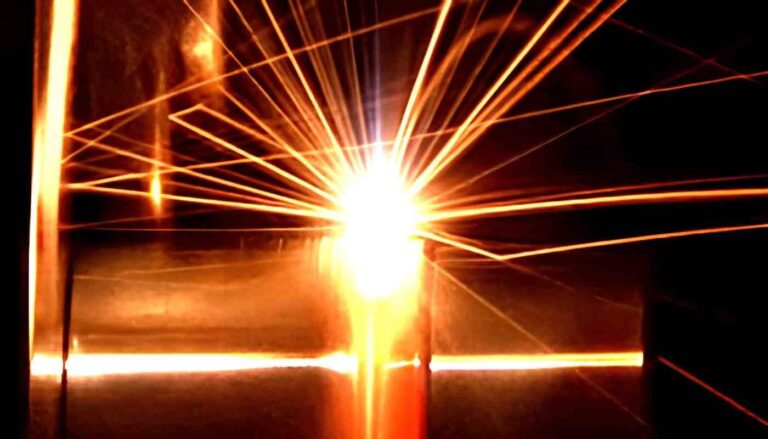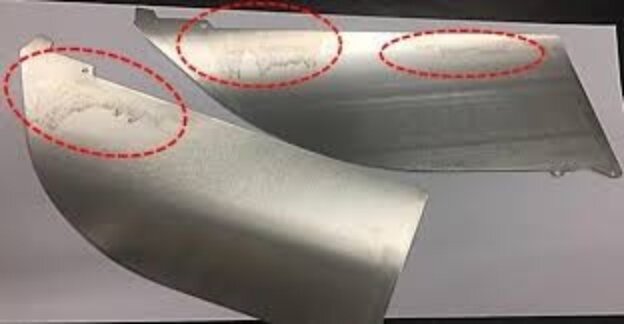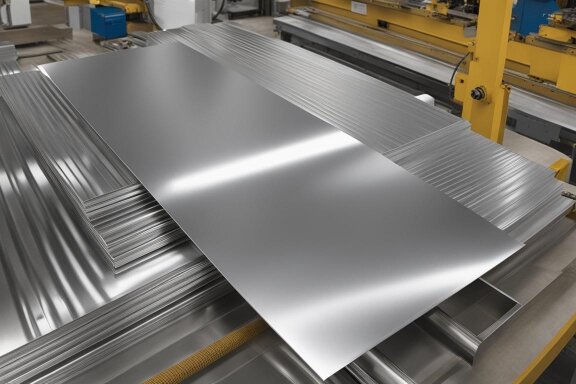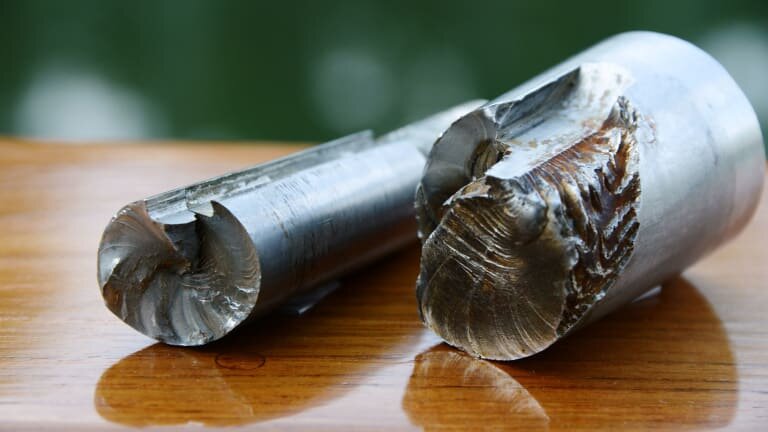It can be not easy to weld high-precision parts. Some traditional methods cannot meet the high standards demanded by industries such as aerospace and automotive. You may have had issues with poor weld quality, distortion of materials, or inefficient processes that drive up costs.
Electron Beam Welding is a method that offers a low-distortion, highly accurate welding solution. We can create deep penetration welds using a focused electron beam with little heat input. This is ideal for applications that require precision and quality.
Are you curious about the potential of this technology to enhance your production? Explore its main benefits.

Basics of Electron Beam Welding
What is Electron Beam Welding (EBW)?
Electron Beam Welding is a process of joining materials using a high-speed electron beam. The process is carried out in a vacuum, which helps to prevent contamination and oxidation. The high-energy electron beam allows deep penetration welding with minimal heat input.
The Key Components in an EBW System
The main components of an Electron Beam Welding System are:
- Electron Gun: Accelerates and generates electrons at high speeds.
- Vacuum chamber: Assures that welding occurs in an environment free of contamination.
- The workpiece manipulator: Positions and moves the workpiece to ensure accurate welding.
- Beam-Control System: This system directs and focuses an electron beam to achieve desired welding characteristics.
- Cooling system: Controls temperature and prevents overheating of equipment or workpieces.
Types of Electron Beam Welding Techniques
There are many variations of Electron Beam Welding. Each is suited for different applications.
- Spot welding: Ideal for small area joining and applications requiring high precision.
- Seam welding: Continuous welding along a seam is suitable for long, linear welds.
- Deep penetration welding utilizes the high energy of the electron beam to create deep welds, commonly used in thick materials.
- Micro Welding: Designed for welding extremely small or delicate components, often used in electronics or medical device manufacturing.
How EBW works: Step-by-step process
Setup and Preparation
- Material selection: The first step is selecting the materials that will be welded. Make sure they are compatible with Electron Beam Welding.
- Cleaning of the Workpieces: All contaminants, such as dust, oil, and oxides that may affect weld quality, are removed.
- Fixturing: Workpieces are clamped securely or fixed to ensure they stay stable during welding.
Loading the Vacuum Chamber
- Placement: The workpieces prepared are placed in the vacuum chamber of EBW machines.
- Sealing Chamber: A vacuum chamber is sealed so that no air can enter the chamber during welding.
- Vacuum creation: Air is sucked out of the chamber, creating a vacuum. This step is essential to ensure a clean and oxidation-free weld.
Electron Beam Generation
- Electron Guns: An electron gun generates a high-velocity stream of electrons.
- Beam-Focusing: Electrons are focused using magnetic lenses into a narrow, concentrated beam. The beam focus is adjusted according to the thickness of the material and the desired penetration depth.
Welding Process
- Beam targeting: A focused electron beam is directed to the junction where two materials meet.
- Fusion and Melting: The kinetic energy from the electrons, when they hit, is converted to heat. This causes the material in the joint to melt together.
- Controlled Motion: The workpiece or electron beam is moved along the joint to create a seamless weld. The movement is precisely regulated to ensure consistent quality of the weld.
Solidification and Cooling
- Deactivation of the Electron Beam: After the weld has been completed, the electron beam will be turned off.
- Cooling: Allowing the material to cool solidifies the molten metal, forming a solid and durable joint.
- Post-Weld Inspection: A weld that has been inspected is checked to ensure it meets quality standards. This inspection may be done using non-destructive methods.
Post-Welding Processing
- Remove the Workpiece: The welding workpiece can be removed after repressurizing the vacuum chamber.
- Cleaning, Finishing, and Machined Areas: The workpiece is cleaned of residual contaminants or oxides. The weld area can be machined or finished to meet the final specifications.

Applications of Electron Beam Welding
Aerospace Industry: Key Applications
- Aircraft engine components
- Satellites and rocket structures
- Turbine blades
- High-stress structural components
Automotive Manufacturing: Enhancing performance
- Powertrain components
- Transmission gears
- Exhaust systems
- Safety-critical components
Power Generation: Turbine and Nuclear Components
- Steam turbine rotors
- Nuclear reactor components
- Heat exchangers
- Pressure vessels
Welding Precision for Electronics and Microelectronics
- Microcircuit connections
- Sensor assemblies
- Semiconductor devices
- Precision Instrumentation
Medical Devices and Instruments
- Surgical Instruments
- Implantable devices
- Diagnostic equipment components
- Components for orthotics and prosthetics
Electron Beam welding: pros and cons
Pros:
High Precision & Accuracy
EBW allows for an exact control of the welding process. This makes it perfect for applications requiring intricate details and tight tolerances.
Deep Penetration
Focused electron beams can achieve
EBW reduces the heat-affected zone (HAZ), reducing distortion, warping, or material degradation.
Clean Welds
A vacuum environment reduces defects and oxidation.
Ability to Weld Different Materials
EBW can join materials with different melting temperatures or thermal expansion rates.
Automation
EBW systems offer excellent repeatability and consistency for multiple welds. This is important in mass production.
Cons:
High equipment costs
The cost of EBW equipment can be prohibitive for small businesses and applications with low volume.
Complex Installation and Maintenance
Installing and maintaining an EBW requires specialized expertise and knowledge, which can increase operational costs and complexity.
Vacuum Requirement
It is necessary to create a vacuum to weld specific components. This increases the setup time and limits the sizes and shapes of parts that can be used.
Limited Materials Compatibility
EBW is capable of welding a variety of materials. However, some materials may not be suitable, notably those that are volatile or outgas under vacuum conditions.
Operator Skills and Training
Operating an EBW requires highly-trained personnel. This can be a barrier in regions needing more skilled operators.
Size Limitations
The size of vacuum chambers can limit the size of workpieces that can be welded.
Comparison with Other Welding Techniques
EBW vs. Laser beam welding
- Precision: Both offer high accuracy, but EBW offers deeper penetration.
- Environment: EBW is done in a vacuum, while LBW may be performed outdoors.
- Material handling: LBW can handle a broader range of materials.
- Speed: LBW generally offers faster processing times.
EBW vs. TIG & MIG Welding
- Heat Affected Zone (HAZ): The HAZ of EBW is smaller than that of TIG or MIG, which reduces distortion.
- Precision: The EBW provides a much higher level of precision and accuracy.
- Application: MIG, TIG, and EBW are versatile, but EBW can be used for specialized tasks that require high precision.
- Setup: TIG, MIG, and EBW have simpler setups at lower costs than EBW.
Friction Stir Welding vs. Friction Stir Welding
- Material compatibility: FSW can only weld certain materials.
- Precision: EBW provides higher precision for complex geometries.
- Environment: FSW does not require a vacuum.
- Application: FSW works best for ductile metals, while EBW suits high-strength and dissimilar alloys.
Resistance Welding vs. EBW
- Penetration: EBW penetrates deeper than Resistance Welding
- Precision: EBW offers greater precision for delicate and complex components.
- Speed: Resistance welding is more efficient and faster for high-volume production.
- Setup: Resistance welding is more cost-effective and straightforward, especially regarding thin materials or spot welding.
Electron Beam Welding: Challenges and Opportunities
High equipment costs
Electron Beam Welding Systems are expensive due to their advanced technology, such as high-voltage power supply, electron guns, or vacuum chambers. The initial investment is high and may not be affordable for all businesses.
Maintenance of EBW equipment is a complex process that requires specialized parts and skills, which can lead to increased operational costs. Regular maintenance is required to keep the system running at its peak. This adds to the cost.
Complexity of Operation
This requires a vacuum, complicating the setup and limiting what can be welded. The preparation time is also increased.
Operators must undergo extensive training to understand the complex aspects of EBW, including how to operate the equipment and welding parameters.
Limited Material Compatibility
EBW is unsuitable for some materials, such as volatile or outgas under vacuum.
Due to the high energy electron beam, it may be challenging to weld thin materials due to melting or distortion.
Operator Skill Requirements
EBW requires high technical expertise to operate the equipment and understand the welding process. This can pose a problem for areas with a shortage of skilled operators.
Operators must stay up-to-date with the latest advances and techniques as EBW technology evolves. This requires ongoing education and training.
Conclusion
Electron Beam Welding is a high-performance welding process that offers precision and quality. The process is not without its challenges, such as high costs and complexity of operation. However, its advantages in terms of welding precision and the ability to work with difficult materials make it an essential tool for advanced manufacturing. EBW is the best choice for applications that cannot compromise on quality.
Do you need a reliable sheet metal parts manufacturer? Shengen is the place to go. We specialize in sheet metal laser cutting, bending, surface finish, and CNC Machining. Reach out to Shengen Today and seek help from professionals!
FAQs
Can sensitive materials be welded with electron beam welding?
Yes, electron beam welding is safe for delicate materials. It is ideal for sensitive and reactive materials such as titanium and aluminum because it occurs in a vacuum.
What materials can you weld using EBW technology?
EBW can be used with various materials, including stainless steel, titanium, aluminum, nickel alloys, and copper. It can be used to weld materials that are dissimilar precisely.
What industries are the biggest beneficiaries of EBW?
Aerospace, automotive, power, electronics, microelectronics, and medical device manufacturing are industries that can benefit the most from EBW. These industries need the high precision, deep penetrating, and minimal distortion EBW offers.
What will the future of EBW technology be shortly?
Future trends for EBW include the development of portable EBW systems, as well as the exploration of EBW applications in additive manufacturing. Ongoing research is needed to expand the materials that can be welded with EBW and improve the procedure’s efficiency.
More Resources:
EBW vs. Laser Beam Welding – Source: Camvaceng
Welding Complex Geometries – Source: Emerson
Material Compatibility in Welding – Source: Hybrocosales
Hey, I'm Kevin Lee

For the past 10 years, I’ve been immersed in various forms of sheet metal fabrication, sharing cool insights here from my experiences across diverse workshops.
Get in touch

Kevin Lee
I have over ten years of professional experience in sheet metal fabrication, specializing in laser cutting, bending, welding, and surface treatment techniques. As the Technical Director at Shengen, I am committed to solving complex manufacturing challenges and driving innovation and quality in each project.




